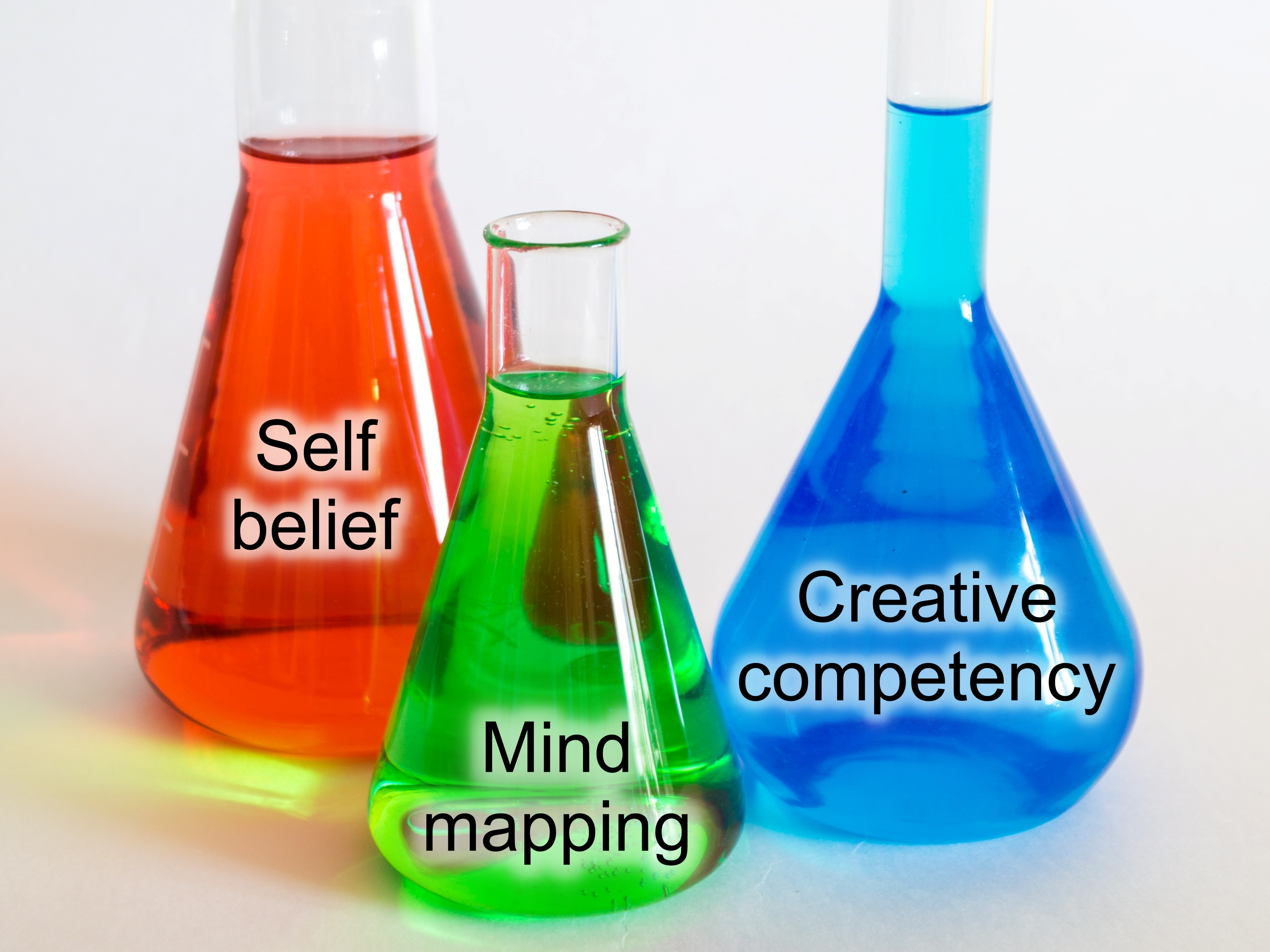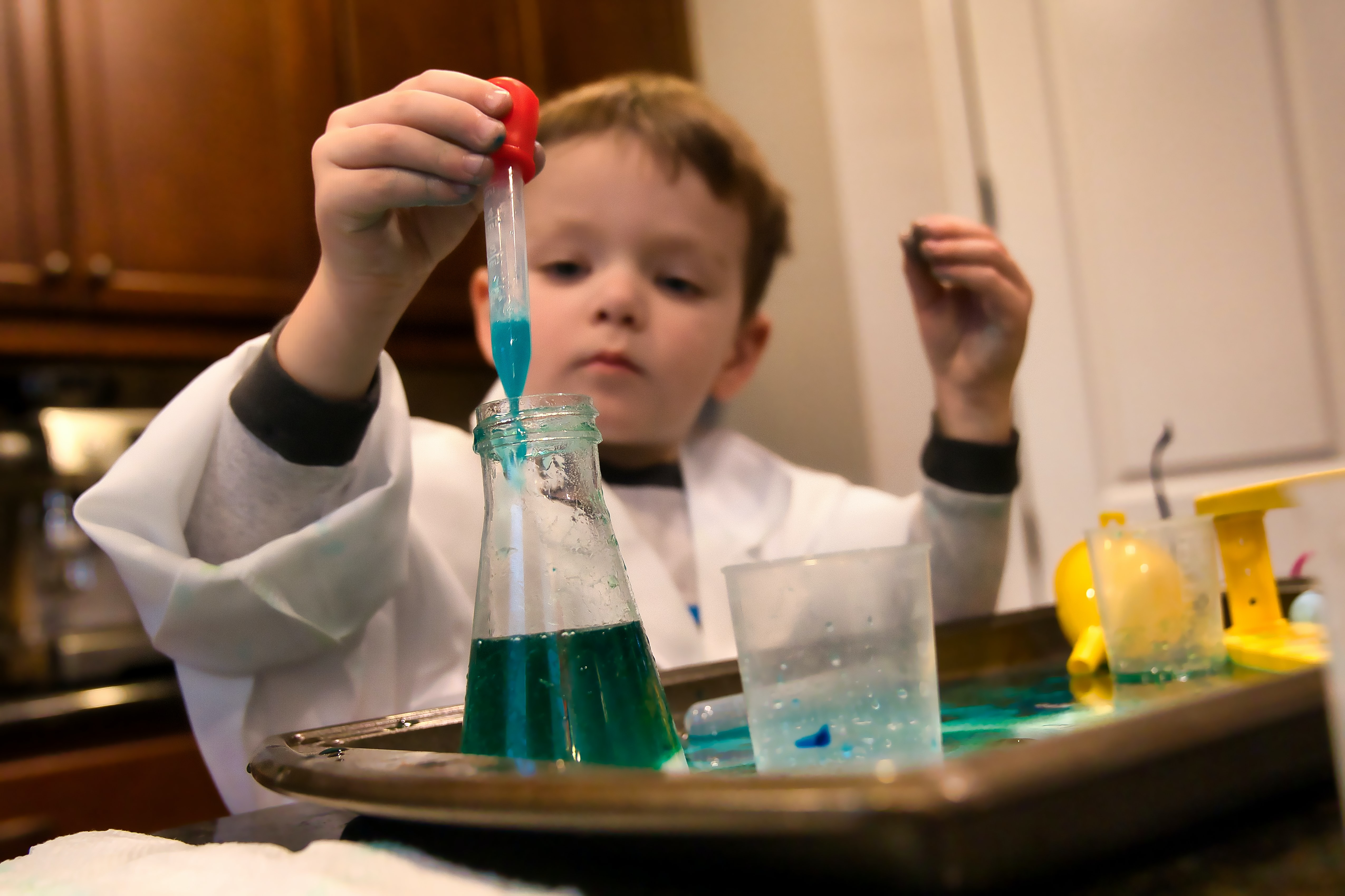From ‘Meh’ to ‘Wow!’ in 3 easy steps
How to stimulate your creativity out of a slump
From MEH to WOW in 3 easy steps? If you’re into Wordle right now, your brain is no-doubt whirring into action. No, the answer is not
MEH
MEW
MOW
WOW
But I like the way you think!
The formula I’m going to give you combines three incredibly powerful creativity catalysts. So, make sure you get out your goggles and protective lab coat for this.
Time required: This exercise will take 10-15 minutes.
Here are your ingredients:
- A mindset: Self-belief
- A skill: Mind mapping
- A competency: Pick one of 4 proven trainable creative competencies (more below)

Step 1: Believe that you can do this
The starting point of any creative endeavour is a creative mindset. Your mindset is the environment in which your creative experiment takes place. Think of your mindset like a chemistry lab. You can’t test the vapour pressure of gas if it is baking hot inside the lab or if a gale is howling through the open windows.
Similarly, when you want to do any creative work, start by preparing your frame of mind. If your mind is plagued by fear, doubt, apathy, or distraction, you are not likely to get good results from this experiment.
In our Blueprint for CreativityTM , we identify eight attitudes that establish a Creative Mindset. These are: courage, self-belief, curiosity, humour, perseverance, learner, delight, and ownership. Although they all contribute to creativity, if you work on developing just one of them, you will improve your creative output.
In this instance I’m recommending self-belief because self-doubt is one of the heaviest attitudes that keeps us in a slump. Also if you don’t believe that you are capable of greater creativity, you are unlikely to put the requisite effort and perseverance into using this formula.
If necessary, talk to yourself out loud (I do.)
“I can do this. I want to do this. I am going to do this.”

Step 2: Get ready to map your mind
The skill you’ll be using is one of the simplest, yet most undervalued creativity skills.
A mind map simulates the radial nature of the brain’s neural networks. Mind mapping is a way of generating and organising ideas using associations through a graphical representation. “A Mind Map is the ultimate thinking tool; it is the easiest way to put information into your brain and take information out of your brain,” Tony Buzan.
Not only does mind mapping help you to generate ideas and recall learning, but it will help you to make connections, analyse gaps, get the big picture, plan, make decisions, summarise, present and think more effectively with others.
Mind mapping is the combination of art and science, logic and emotion, words, and images, discipline and fun. Mind mapping combines all these things to make the result, the mind map, something that your brain really likes.
You’ll be using this skill in the next step. For a refresher on how to create a mind map click here.

Step 3: Pick a creative competency and map it out
Famed psychologist and ivy-league professor, Dr Robert Epstein, led a study to measure four trainable competencies that have been shown to enhance creativity. The study included an ethnically diverse sample of 13,578 people in 47 countries. This smart team of creativity researchers wanted to know: Which competencies are most important for creative expression?
What they found was…
People who exhibited* these competencies were not only creative more often but had a higher level of life satisfaction and professional success. That’s quite an upside!
So, what were these creativity-magnifying competencies?
<Drum roll…>
The award for the Competencies that Best Support Creative Expression goes to…
- Capturing (record ideas without judging them),
- Challenging (do things that scare you, deal with failure),
- Broadening (extend your knowledge and skills well beyond your area of expertise), and
- Surrounding (surround yourself with diverse and novel physical and social stimuli.)
<Applause>

Over to you. Action time.
All you need to do is pick one of these four competencies.
Get out a sheet of paper and a pen. In the centre of the page, frame a question from the competency. For example: 2. How might I challenge myself more? Or 3. How might I widen my knowledge beyond my comfort zone?
Then write down all the ideas that come to you, linking associated ideas together.
When you’ve captured all your ideas in your mind map, take a break, get a cup of tea, and then come back and write down as many more ideas as you had before the break. Push yourself. Use objects on your desk to prompt more ideas.
Now, look over your mind map. Is there anything there that surprises you? Can you see any new links? Are there any themes worth noting? What ideas are you naturally drawn to the most?
Put your mind map somewhere that it you will see it often (e.g. on a wall near your computer or on the fridge.)
Finally, pick ONE idea to action in the next 24 hours and do it.
The next steps are up to you.
So there you have it. Three ingredients and a formula to put them together. You are on your way. The next steps really are up to you. Take it a step further, action another idea, and another. Notice the change in your creative thinking. Next try this with another competency. Keep going. You now have the power of the First Law of Motion behind you propelling your creative thinking to ever greater heights:
“A body at rest tends to remain at rest. A body in motion tends to stay in motion.” Sir Isaac Newton

*[Fun fact for the talent development professionals out there: In this study, the competency (and thus creativity) scores were substantially higher for people who had had creativity training, and more training was associated with higher scores.]


